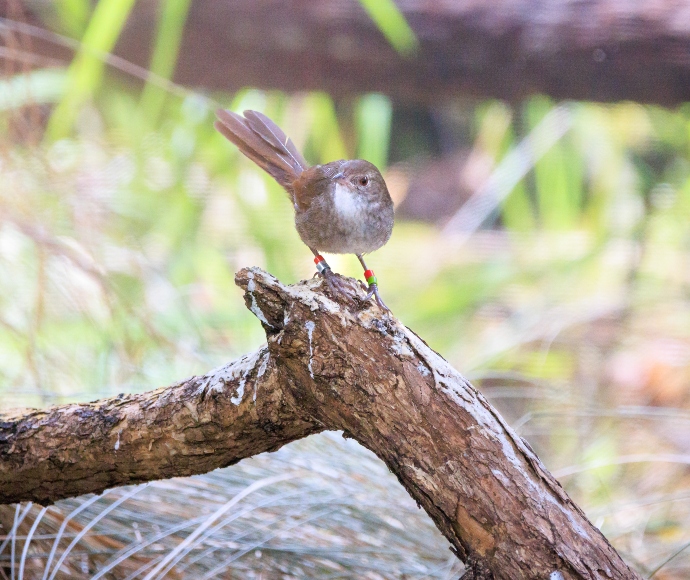Bristlebirds bolstered by release of captive-bred birds
The northern-most population of one of Australia’s rarest birds has been bolstered by the release of 6 captive-bred eastern bristlebirds into the wild within the Border Ranges area.
This is a huge milestone for this conservation program, with breeding and research more than 18 years in the making.
NSW Department of Planning and Environment Senior Threatened Species Officer Kelly Roche said eastern bristlebirds were once a more common sight from Queensland to Victoria, but today fewer than 2,500 birds are left in the wild.
“The remaining birds are separated into 4 geographically isolated populations, with our northern population, which spans northern New South Wales and south-east Queensland, made up of less than 40 birds,” said Ms Roche.
“Small, isolated populations like this one suffer low genetic diversity, which compromises the ability of the species to breed. This makes the birds more vulnerable to threats such as wildfire, habitat loss, disease and climate change,” said Ms Roche.
Thanks to a partnership with Currumbin Wildlife Sanctuary, 6 of these critically endangered birds were captive-bred using a cutting-edge conservation technique known as ‘genetic rescue’ in a bid to turn the tide on eastern bristlebird extinction.
“By introducing breeding individuals from larger populations into the northern population, we can increase genetic diversity and improve the overall resilience of the species,” said Currumbin Wildlife Sanctuary’s bird supervisor, Allison Beutel.
“After a health check at Currumbin, and a ride in a temperature-controlled vehicle to the habitat area, the birds spent a few days in ‘soft-release’ tents, which we’d kitted out with tussock grass and perching logs.
“When the time was right, we opened the zips, and the birds were free to move out into the wild habitat.
“The 6 released birds are so far doing really well and have been exploring their new home. We’ve observed some of the birds foraging and interacting with other wild birds,” said Ms Beutel.
The released birds were monitored via radio telemetry for 30 days to better understand how the individuals are faring in the wild. Longer term, they will be monitored as part of the annual census to understand the wild populations’ status and how it is responding to ongoing habitat restoration.
“The end goal is to see resilient populations of healthy eastern bristlebird, able to sustain population growth in the wild,” said Ms Roche.
The release was coordinated by the NSW Department of Planning and Environment, in partnership with Currumbin Wildlife Sanctuary, NSW National Parks and Wildlife Service and private landholders.
The Saving Our Species program is also delivering habitat management actions as part of the eastern bristlebird recovery program, including prescribed fire to restore grassy understorey habitat, weed and feral animal control, and working with landholders to promote habitat protection and management.
To find out more about the eastern bristlebird, visit:
